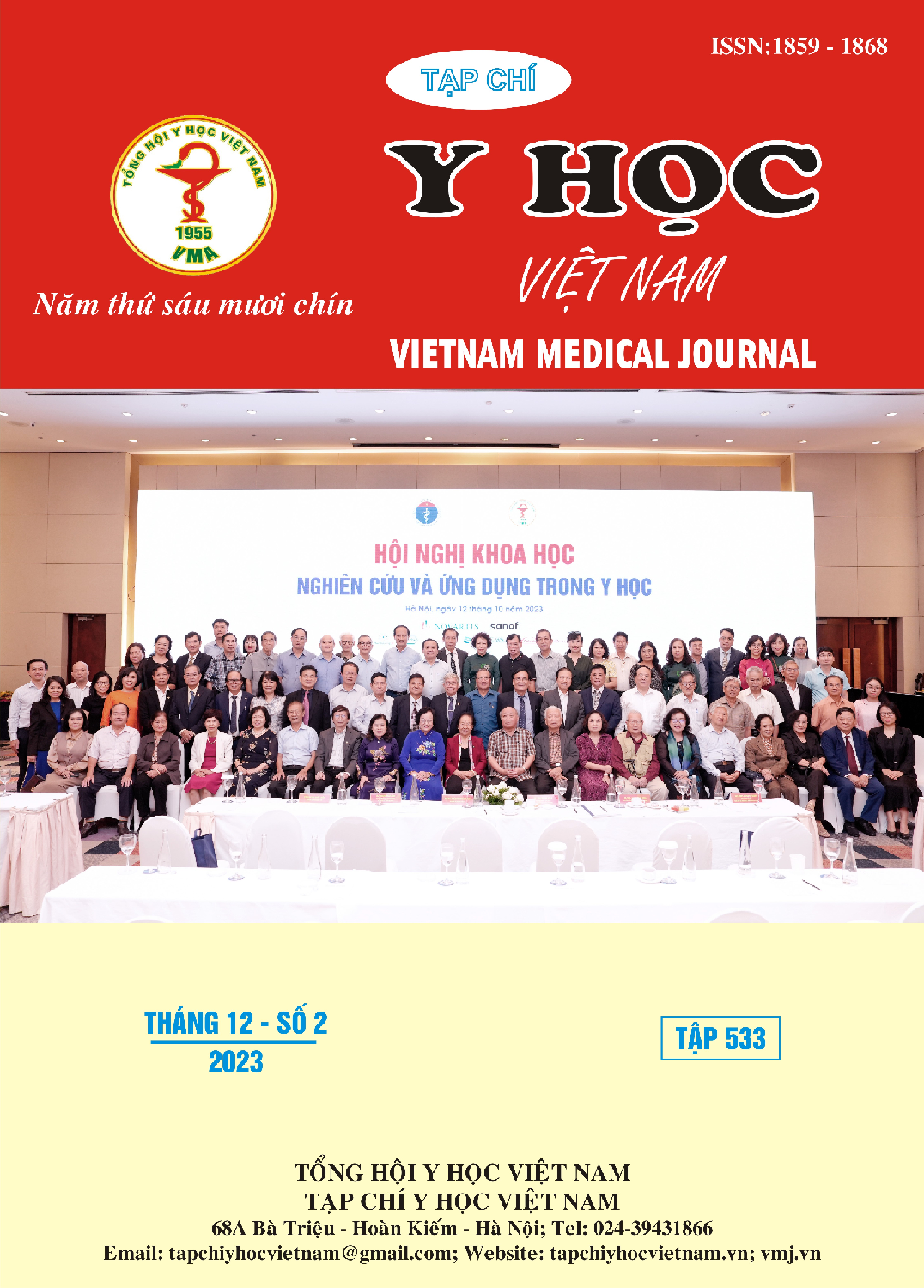RISK FACTORS CAUSING RENAL SCARRING DAMAGE IN PATIENT WITH SPINA BIFIDA
Main Article Content
Abstract
Aim: describes risk factors that cause renal scarring in patients with spina bifida. Subject: retrospective medical records of 62 patients with neurogenic bladder due to spina bifida who had done spina bifida surgery at the National Hospital of Pediatrics from 01/2013 to 31/03/2019. All patients have been done 99mTc-DMSA to evaluate renal scaring or not. Voiding cystography shows vesicoureteral reflux or without vesicoureteral reflux and urinary tract infection history was taken note. SPSS analysis with p < 0.05, statistical significance. Results: 62 patients with neurogenic bladder due to spina bifida including 45,5% were male and 54,5% were female. Myelomeningocele was 72,6%, and limpo myelomeningocele was 27,4%. 18 patients (29,0%) presented renal scaring on DMSA with a mean age was 5,1 ± 3,1 years (p < 0,05). 29 patients (46,8%) had vesicoureteral reflux and 38 patients (61,3%) had urinary tract infections. Renal scarring associated with vesicoureteral reflux and urinary tract infection with 48,3% and 42,1%, statistical significance. Conclusion: vesicoureteral reflux and urinary tract infection were factors that have caused renal sacring in patients with spina bifida.
Article Details
References
2. Veenboer P.W, Bosch J.L, van Asbeck F.W et al (2012). Upper and lower urinary tract outcomes in adult myelomeningocele patients: a systematic review. PLOS ONE | www.plosone.org, 7(10), e48399.
3. Finkelstein J.B, Rague J.T, Chow J., et al (2020). Accuracy of Ultrasound in Identifying Renal Scarring as Compared to DMSA Scan. Urology, 138: 134 - 137.
4. Lebowitz R.L, Olbing H, Parkkulainen K.V et al (1985). International system of radiographic grading of vesicoureteric reflux Pediatr Radiol 15, 105-109.
5. Ma Y, Li B, Wang L et al (2013). The predictive factors of hydronephrosis in patients with spina bifida: reports from China. Int Urol Nephrol, 45(3), 687-93.
6. Miklaszewska M, Korohoda P, Zachwieja K et al (2016). Can We Further Improve the Quality of Nephro-Urological Care in Children with Myelomeningocele? Int J Environ Res Public Health, 13(9).
7. Timberlake M.D, Jacobs M.A, Kern A.J et al (2018). Streamlining risk stratification in infants and young children with spinal dysraphism: Vesicoureteral reflux and/or bladder trabeculations outperforms other urodynamic findings for predicting adverse outcomes. J Pediatr Urol, 14(4), 319 e1-319 e7.
8. DeLair S.M, Eandi J, White M.J et al (2007). Renal cortical deterioration in children with spinal dysraphism: analysis of risk factors. J Spinal Cord Med, 30 Suppl 1, S30-4.
9. Kanaheswari Y and Mohd Rizal A.M (2015). Renal scarring and chronic kidney disease in children with spina bifida in a multidisciplinary Malaysian centre. J Paediatr Child Health, 51(12), 1175-81.
10. Prakash R, Puri A, Anand R et al (2017). Predictors of upper tract damage in pediatric neurogenic bladder. J Pediatr Urol, 13(5), 503 e1-503 e7.


